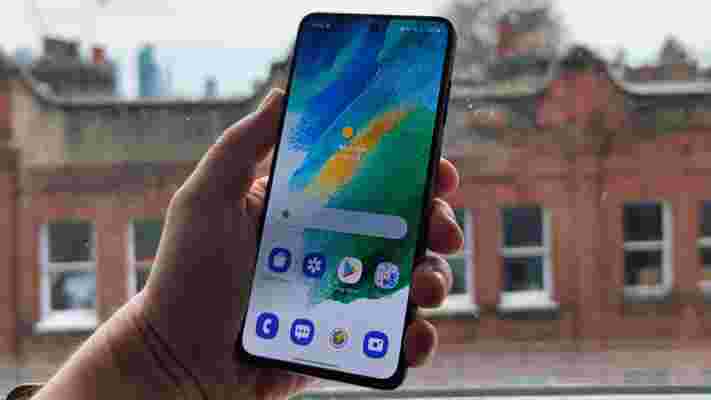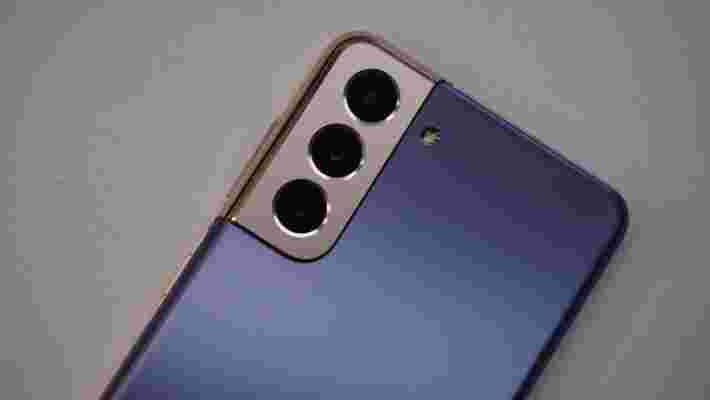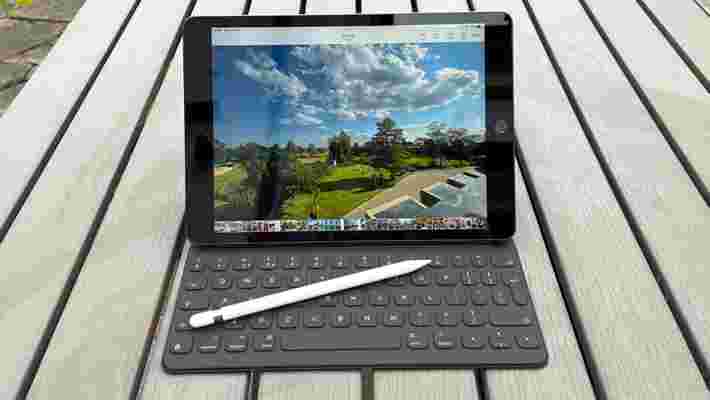The Samsung Galaxy S21 FE is finally out, arriving almost a year after the Samsung Galaxy S21 , which kicked the whole series off.
Given that considerable gap, it’s worth comparing the two phones. Did Samsung make any improvements during that time, or does the quality of the original Galaxy S21 still shine through?
Our reviews will tell you that we rate the Galaxy S21 a little more highly than the Galaxy S21 FE, but context is king here.
Samsung Galaxy S21 FE vs Samsung Galaxy S21: price and availability
As we mentioned, the Samsung Galaxy S21 FE arrived very late in the day - in January 2022. That’s a year after the release of the original Galaxy S21, which launched on January 29, 2021.
Prices for the Galaxy S21 FE start at $699 / £699 / AU$999 for the 6GB RAM/128GB storage model, and rise to $769 / £749 / AU$1,099 for the 8GB RAM and 256GB version.
When the Samsung Galaxy S21 first launched, it was $799 / £769 / AU$1,249 for 128GB of storage, and $849.99 / £819 / AU$1,349 for 256GB.
Even a year later, those prices still technically hold true - at least on the official Samsung website - but you can expect to enjoy a healthy saving if you go through a third-party retailer. Indeed, if you shop around, you might just be able to get a brand new S21 model for a price similar to the Galaxy S21 FE.
While the two phones are similarly priced right now, the difference in launch timing makes the Galaxy S21 FE feel more costly.
Design
As the name would suggest, the Samsung Galaxy S21 FE lifts an awful lot from the Galaxy S21, and that includes its design. Both phones have ‘Glasstic’ bodies that feel a little cheap in the hand.
Both, too, have that attractive ‘Contour Cut’ camera bump that flows around the side of the device. However, that bump is made of plastic in the FE, while the Galaxy S21’s is made of aluminum.
There’s no shortfall in water and dust proofing with the new phone, as it enjoys the same IP68 rating as its more premium brother.
The most consequential design difference here is that the Samsung Galaxy S21 FE is larger than the Galaxy S21. It’s exactly the same thickness at 7.9mm, but it’s taller (155.7mm vs 151.7mm), wider (74.5mm vs 71.2mm), and heavier (177g vs 169g).
It’s not difficult to understand why, but we’ll get into the FE’s larger display and battery a bit later. Given the similar specs and price, though, this difference could prove to be a crucial factor. The decision over which phone is best for you could come down to how large you want your phone to be.
Another consideration is a purely aesthetic one. The Galaxy S21 FE comes in White, Graphite (black), Lavender (pink), and Olive (green). The Galaxy S21 gives you Phantom Gray, Phantom White, Phantom Pink, and Phantom Violet.
In short, both are moderately attractive phones that fall just short of true flagship level in terms of hand feel, if not build quality.
Display

Yep, the Galaxy S21 FE has a larger display than the Galaxy S21. We’re not talking about a big difference here: 6.4-inches for the S21 FE versus 6.2-inches for the Galaxy S21. But, if you consume a lot of video content or play a lot of games, then the FE might be a slightly better fit.
Otherwise, the two screens are very similar indeed. Both are Dynamic AMOLED 2X displays with 1080 x 2400 (FHD+) resolutions and 120Hz refresh rates. This does mean that the Galaxy S21’s smaller screen is technically more pixel-dense, but we’re not talking about any kind of significant advantage here.
The quality of both screens is unimpeachable, with those trademark Samsung levels of brightness, vibrancy, and responsiveness. Nobody does it better.
Both also have a central hole-punch notch, and both are dead flat too. In terms of scratch resistance, both employ Gorilla Glass Victus, so it’s all square on that front.
It all comes down to how large you like your smartphone screen, really.
Camera

The Galaxy S21 FE and Galaxy S21 share very similar camera set-ups, but there are a couple of differences, both major and minor.
In terms of main or wide cameras, both phones share the same 12MP 1/1.76" sensor. There’s no difference between them.
Both also have 12MP 123-degree ultra-wide sensors, though the Galaxy S21’s is a little larger, and thus technically superior in low-light conditions.
The biggest difference, as far as cameras are concerned, lies in the telephoto provision. While the original Galaxy S21 supplied an unusually sharp 64MP sensor, the Galaxy S21 FE steps down to an 8MP provision. They share the same lens though, which allows for 1.1x optical zoom and an effective 3x hybrid zoom.
Our reviewer didn’t find a significant difference in quality for the resulting zoomed shots, but we’d obviously give the nod to the Galaxy S21.
In terms of general image quality, both are similarly accomplished, shooting vivid and bright snaps with the usual hint of Samsung over-saturation.
Both phones have 32MP selfie cameras too, so it’s all even on that front.
One main quality that both camera systems share is a remarkably even tone across all three sensors. That’s quite rare among smartphones.
Additionally, both phone cameras pack in custom Samsung software features like Single Take, which captures short 5 to 15-second snippets and selects the best stills and video footage from it. Then there’s Dual Recording, which allows you to record video on a rear and front camera simultaneously.
Interestingly, while both phones can capture 4K video at 60fps on the rear and the front, only the Samsung Galaxy S21 can capture 8K 24fps footage. We have no idea why that might be, but as very few people actually care about 8K right now, it’s no great loss.
Specs and performance
The Samsung Galaxy S21 and the Samsung Galaxy S21 FE offer broadly similar performance, but there are subtle differences.
While all Galaxy S21 FE models carry the Snapdragon 888 chip, only the US and China models of the Galaxy S21 do the same. The global model of the latter uses Samsung’s home-brewed Exynos 2100 alternative.
Samsung’s chip gets in the same ballpark as the Snapdragon 888, but it has been shown to be slightly less capable. For pure performance, then, the newer and cheaper Galaxy S21 FE has a slight advantage for most of the world.
On the other hand, while every iteration of the Galaxy S21 offers a solid 8GB of RAM, the entry model of the Galaxy S21 FE only gives you 6GB. So there’s that.
We should also note that the Galaxy S21 FE’s late arrival means that its performance feels a little underwhelming especially when similarly priced phones packing the Snapdragon 8 Gen 1 are imminent. Like we said, context is king, and timing is everything.
In practical terms, both phones are plenty fast enough, and you won’t notice any difference during day to day or even intensive tasks.
Both phones also offer the same 128GB and 256GB storage options, and neither comes with microSD expansion potential. We should also point out that both phones are 5G ready.
Battery
The Samsung Galaxy S21 FE gives you a 4500mAh battery, while the Galaxy S21 gives you a much smaller 4000mAh cell. Of course, the smaller phone also has a smaller – and thus less power-intensive – display.
Whatever the capacities, neither phone has what we’d term outstanding stamina. Both will get you to the end of a day of normal usage; heavier use might require an extra charge.
Play Genshin Impact for a couple of hours, or stream a movie on the train - all while indulging in intensive messaging and Google Map route finding, and you’ll almost certainly run out of juice well before the end of the day.
Samsung, as ever, supplies you with a bunch of battery saver modes, but you might bemoan the number of times you’re forced to rely on them if you’re something of a power user.
The charging provisions are just as disappointing in both phones. You’re looking at a maximum of 25W charging support, which falls well short of the 65W charging found in the OnePlus 9 and other similarly-priced phones. What’s more, there’s no charging brick in either box.
You do get 15W wireless charging though, not to mention reverse wireless charging.
Takeaway
The Samsung Galaxy S21 FE stands up to the Galaxy S21 almost every step of the way, matching it in many respects.
Performance is broadly similar, as are the two camera systems the designs are also cut from the same cloth. Ultimately, it may just come down to how big you like your phone to be. The Galaxy S21 is the more compact of the two, which may suit some more than others.
But the true deciding factor here is price. We found the Galaxy S21 FE to be far too expensive given its late arrival, and the fact that it’s soon to be widely one-upped by multiple rivals.
If you can find the Galaxy S21 for a knock-down price – which is perfectly feasible given its time on the market – then it could represent superior value.
Joby takes on Rode with huge microphone range for mirrorless cameras
It may be best known for its Gorillapod tripods, but Joby has boosted its audio lineup in a big way with the launch of five new microphones for video creators.
Collectively known as the Wavo range, the new mics sit across a range of price points and look like promising alternatives to the rival offerings we've seen from the likes of Rode, Sennheiser and Shure.
Its flagship microphone is the Wavo Pro ($299 / £258 / around AU$495), a shotgun mic that's been designed for vloggers who use mirrorless cameras . It comes with active noise reduction that's designed to filter out background distractions, a companion app for iOS and Android to help you monitor sound levels, and handy LEDS on the front and back for visual feedback about your recordings.
If that model's slightly out of your budget, there's also the Wave Pro DS ($249 / £228.95 / around AU$440, available from March). This model doesn't have mobile app control, a secondary mic input or active noise reduction, so is better-suited to those who mostly record indoors. But you do get a high-pass filter to help clean the lower frequencies and, like the Wavo Pro, it also has an onboard 'safe track' that's helpful if you've accidentally clipped your recording.
Joby is clearly going after every kind of YouTuber and vlogger with its new range because there are also wireless, condenser and lavalier mics in the Wavo lineup. If you like to roam around while talking to camera, the Wavo Air ($249 / £215, around $410) is a handy new wireless option for smartphones and mirrorless cameras. Like the Rode Wireless Go II , it includes two clip-on lavalier mics plus a transmitter. The 2.4GHz wireless mic system promises a 50m range and six-hour battery life, both of which are slightly less than its Rode rival (although it's slightly cheaper, too).
If you're looking for something slightly more discreet and don't need wireless connectivity, the Wavo Lav Pro ($79 / £69 AU$135) is a 3.5mm mic with a 2.5m-long cable. The apparently 'pro-grade' capsule comes with a foam windshield and weighs only 12g. And lastly, for desk-based creators and podcasters, there's the Wavo Pod ($99 / £86 / AU$165), which is a USB condenser microphone with 24bit/48kHz sampling rates and a colorful pop filter to reduce voice plosives (bursts of air that hit the mic and create a 'pop' sound).
With the exception of the Wavo Pro DS, which will be available from March, all of Joby's new microphones are available to buy now. We're looking forward to seeing how they compare to similar offerings from the likes of Rode, Sennheiser, Shure and, in the case of the Wavo Pod, the popular Blue Yeti.
Analysis: Boom time for home creators

The so-called 'creator economy' was already growing before the pandemic, but a combination of stay-at-home orders and increasingly affordable tech has seen it explode in the past couple of years. That's why we're seeing so many new accessories for video and audio recording, including this new Wavo range from Joby.
These aren't the first microphones we've seen from Joby, which also makes Gorillapod tripods, mobile lighting and other accessories. But they are its biggest attempt yet to steal some attention away from rivals like Rode and Sennheiser.
Given the rest of Joby's range, it certainly makes sense for it to try and become a one-stop shop for fledgling YouTubers and other creators. After all, according to data analysts SignalFire , there are now over 50 million people (and counting) in the 'creator economy', who are classed as independent content creators and community builders.
We'll have to see how its Wavo range performs in reality, but Joby is a part of the same Vitec Group as Lowepro, Gitzo and Manfrotto, so has some considerable might behind it. And on paper, the Wavo microphones look like promising new options for most styles of video and audio recording.
The Wavo Pro is an obvious rival to the Rode VideoMic Pro+, another shotgun mic with a similar price tag. And the Wavo Air is part of the increasingly competitive field of wireless, clip-on mics that includes the Rode Wireless Go II (our current favorite) and the DJI Mic, which we're in the process of testing.
New iPad 2022: everything we know so far
The new iPad for 2022 will likely only bring small improvements over its predecessor, but for the target audience for this entry-level slate, that's probably just fine.
This range of iPads is designed for people who don't need loads of processing power, huge screens or fancy features, but just need an easy-to-use low-cost slate that'll serve them well. The iPad 10.2 (2021) did just this last year, but we normally see this slate line refreshed each year.
Some of Apple's tablets are rumored to be getting big upgrades in 2022, but we're not expecting the entry-level iPad to see that love - each generation usually only brings minor tweaks, not big reinventions.
There’s little in the way of news about Apple’s next entry-level slate yet, but we have heard a few things and we can predict some others, and you’ll find those below, covering the possible release date, price, and some of the specs and features.
Then further down we’ve included a wish list of what we want to see from the new iPad 2022 to make it the best budget iPad possible. And make sure to check back regularly, as we’ll be updating this article whenever we hear any news or rumors about this tablet.
Cut to the chase
New iPad 2022 release date and price
The only iPad 2022 release date rumor so far points to late 2022, and that makes sense, as the iPad 10.2 (2021) was unveiled on September 14, the iPad 10.2 (2020) was announced on September 15 of its launch year, and the iPad 10.2 (2019) on September 12. You’re probably noticing a pattern here.
They were all announced around the middle of September, and in the last two years they were also announced on a Tuesday, so if we had to get more specific we’d guess the new iPad 2022 will be announced on Tuesday September 13, 2022.
The time between announcement and availability is more variable, but it’s unlikely to be more than a couple of weeks, so we’d think the new iPad 2022 would hit stores before the end of September 2022, and possibly even within a few days of its announcement.
As for the price, the iPad 10.2 (2021) starts at $329 / £319 / AU$499, and the iPad 10.2 (2020) had a similar starting price, so we’d think roughly the same again is likely, but there’s no news on that yet.

Design and display
The first significant new iPad 2022 leak , pointed to the slate having a 10.2-inch screen (like the 2021 model) and much the same design as its predecessor. We thought that meant the physical home button would probably remain, along with its big bezels. The report said the range won't be getting a redesign until 2023.
That was contradicted by another leak , though, which said that the entry-level slate would get a redesign to bring it in line with its Mini, Air and Pro siblings - as well as a screen size change.
That second leak is more recent, so perhaps it reflects newer information.
There’s no news yet on what tech the screen will use, but we can be fairly confident that it will stick with an LCD screen.
There was some suggestion that Apple might switch to OLED for the iPad Air 5 , but recent reports suggest that isn’t happening , with 2024 now looking more likely for the first OLED iPads, and either way there was no mention of the basic iPad getting this display tech.
Specs and features
One leak has pointed to the iPad 2022 as having 5G for the first time in the range. This is a believable claim and might be the biggest upgrade this model gets.
The same source says to expect Bluetooth 5.0, Wi-Fi 6, an A14 Bionic chipset (which was previously used in the iPhone 12 range and would be an upgrade on the iPad 10.2 (2021)'s A13 Bionic), and a Lightning port.
While we'd take all of this with a pinch of salt, it's all believable. In fact we'd be surprised if that new iPad 2022 didn't get the A14 Bionic chipset, given that it's a generation newer than the previous slate's chip (though notably not the newest chipset available).
That said, on the 5G front there's an outside chance that won't be supported, as the iPad Air 4 (2020) doesn’t have 5G either, so Apple might add that to the iPad Air 5 but leave it off the basic iPad for another year.
Beyond that, we'd guess there probably won’t be any significant changes to the front-facing camera, as that’s only just had a big upgrade for the latest model.
What we want to see
To make the new iPad 2022 as good as possible we want it to have the following things.
1. Face ID
The lack of Face ID on the new iPad 10.2 (2021) isn’t overly surprising given that Apple currently reserves this tech for the iPad Pro range. But over in iPhone land it’s basically now a standard feature and has been for years, so we’d like to see the company make it standard on iPads too.
We don’t particularly expect the new iPad 2022 to get Face ID, since it will presumably be last in line for it, with the iPad Air and iPad mini ranges likely to get it first, but it would be nice to see.
This tech has been around so long that it doesn’t feel like it should need to be a premium feature anymore, so Apple, stop holding it back.
2. A modern design
The basic iPad range is now alone in being the only tablet range from Apple that doesn’t include a modern design with smaller bezels and no home button, with even the iPad mini (2021) sporting this look.
Instead, you’re stuck with a very dated and relatively cheap appearance on the iPad 10.2 (2021), and it’s one that we want to see gone with the new iPad 2022.
3. Support for recent accessories

The iPad 10.2 (2021) supports the original Apple Pencil and the Smart Keyboard, but it lacks support for the Apple Pencil 2 and the Magic Keyboard, making it less good both for typing and sketching than it could be – or than other Apple tablets are.
Supporting these accessories shouldn’t be hard, and we wouldn’t think they’d add much if anything to Apple’s costs, so there’s really no reason to block the iPad 2022 off from them.
4. Recalibrating speakers
The iPad 10.2 (2021) doesn’t have bad speakers, but unlike the iPad mini (2021) and the iPad Air 4, they don’t recalibrate based on the orientation of the tablet.
With one of those tablets then you’ll be getting the best from the speakers whether you use the slate in portrait or landscape orientation, but not here. Hopefully, Apple fixes that for the next model.
5. 128GB base size
With the iPad 10.2 (2021) Apple upgraded the base storage size from the pathetically tiny 32GB of the iPad 10.2 (2020), to a still rather small 64GB.
We know this is a cheap slate, so the company wants to keep the cost down as much as possible, but 64GB is a just barely acceptable amount of storage in 2021, let alone 2022 when the next model is expected. So we want to see the new iPad 2022 start with 128GB of storage, especially as there’s no microSD card slot.